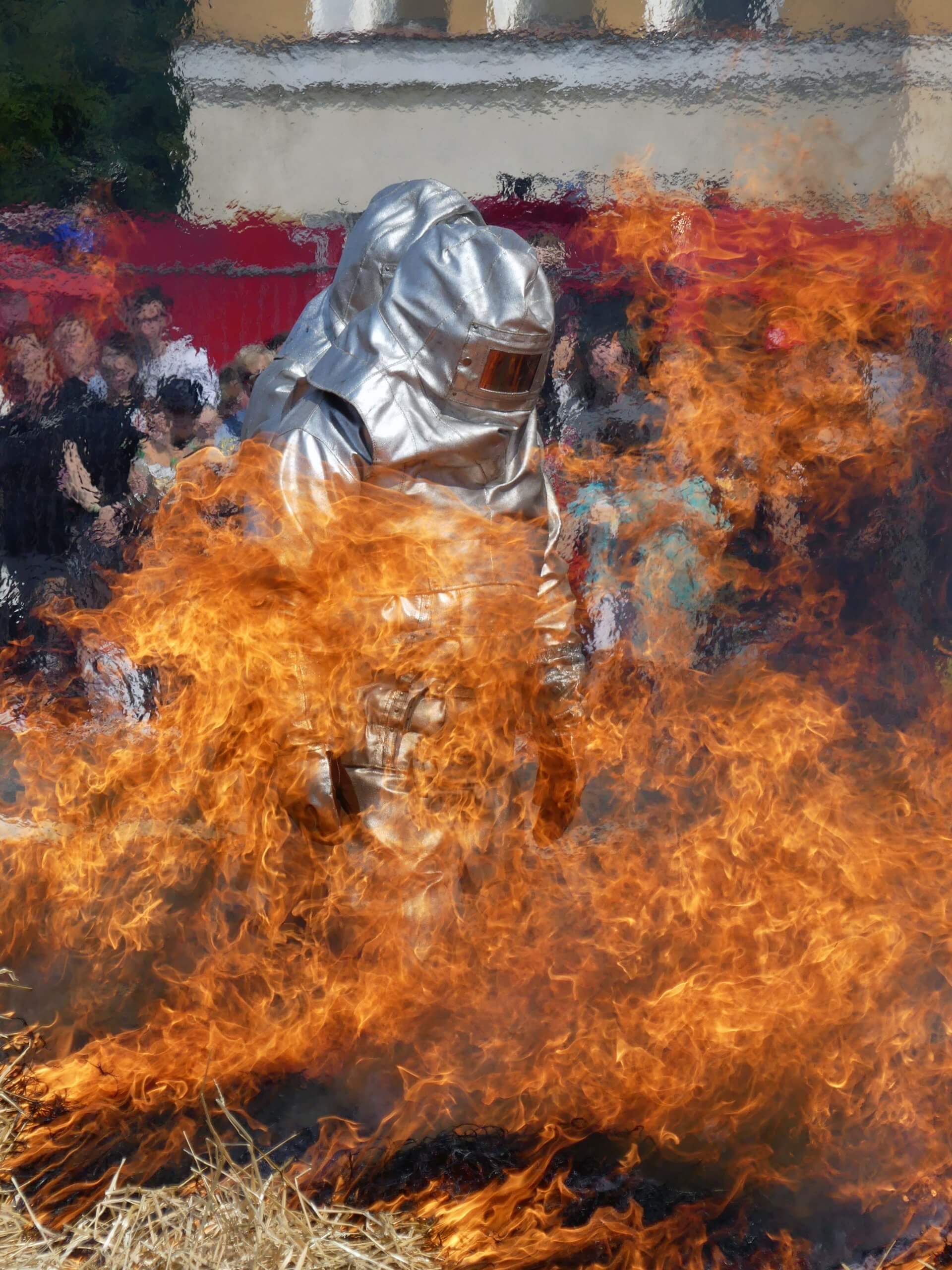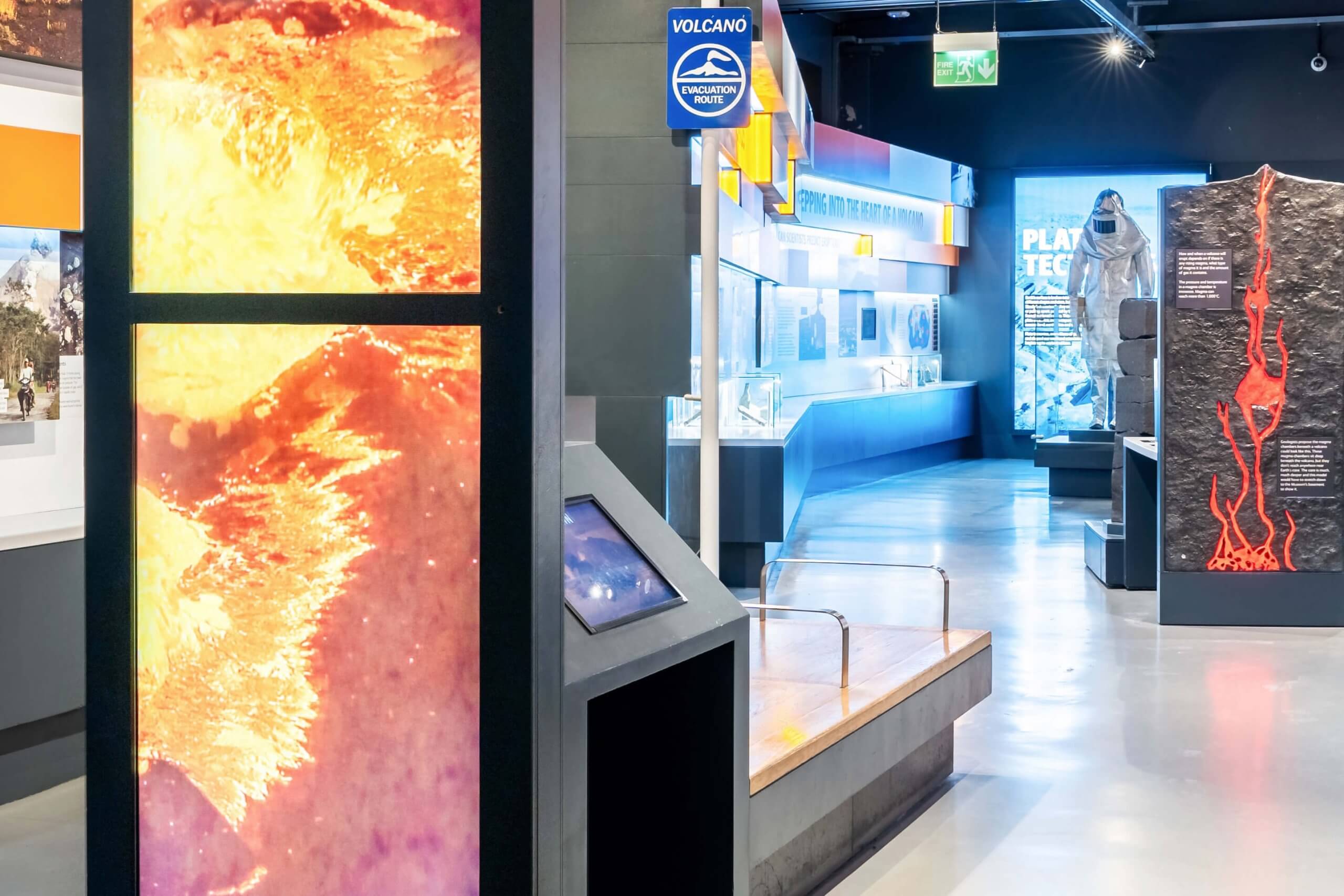How Fire Proximity Suits Work
Proximity suits date all the way back to the 1930s, when industrial workers in close quarters with furnaces needed protection from the incendiary temperatures. Back then, the heat resistant material of choice was asbestos – now known to be fatally carcinogenic – but the principles of radiation, reflection and insulation are still the same today.
Modern proximity suits are still used by industrial workers, but they’re also used by volcanologists and for complex firefighting situations – like ARFF. Fire proximity suits consist of several parts, which fully envelop the wearer and seal them from the environment:
- Helmet/hood
- Insulated liner and vapour barrier
- Jacket and bottoms
- Gloves and protective boots
- Self-contained breathing apparatus
The suit works by reflecting high radiant loads with an aluminised outer layer, usually vacuum-deposited onto Kevlar or fibreglass. The aluminium can reflect up to 90% of the radiation from a fire, but it’s the interior insulation layers which prolong the duration that a person can be indirectly exposed to fire for. The more insulation, the better the resistance – but it can negatively impact mobility, which can be a crucial requirement.
Quilted Nomex® fabric (or a blend) is typically used as an insulation material: it’s tough, breathable, highly resistant to burning and doesn’t stretch, shrink, melt or drip. It’s an extremely poor conductor of heat, making it an ideal insulator.
Generally, a proximity suit (and the person inside it) cannot survive long periods of direct contact with flames. The user has about 30 seconds of complete engulfment before second-degree burns can occur. For entry into flames, a more substantial suit is required.
Entry Suit
Complex rescue operations may require a firefighter to enter partially burning areas in order to clear a path out for trapped persons – and an entry suit is the most heavy-duty protection available for getting close to fire. It’s a highly specialised piece of protective equipment for firefighting, where the user is likely to become totally engulfed in flames. Entry suits usually aren’t aluminised; reflecting radiation isn’t going to help when heat is being directly conducted through the material.
Instead, specialist fibreglass materials like Zetex are used, which exhibit many of the same properties as asbestos without the health risks. Zetex outperforms asbestos and almost all other synthetic fibreglass materials, and can be formed into a texturised fabric that can be applied to clothing. Extremely heavy insulation is used, too – which makes mobility and wearer stamina an issue. An additional 10kg of weight can be expected to be added when donning an entry suit, even before breathing apparatus has been fitted.
Because of the toll they take on the wearer, and the inherent risks of being engulfed in flames, entry suits are reserved for the most extreme situations only.
Natural History Museum
We recently completed a case study at The Natural History Museum as many of our fire curtains are installed at the museum. The museum also has a fire proximity suit, so you can see one up close.



